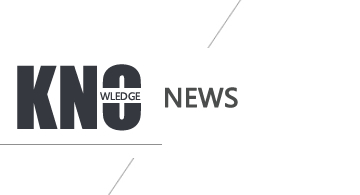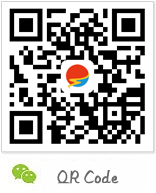Four key factors for seamless connection of prepress, printing and post printing
Publisher: Administrator Date:2020-06-22
An exquisite design work is undoubtedly the crystallization of the wisdom and inspiration of the designer, but there is a considerable distance from "design work" to "printed product". Starting from actual production, this paper summarizes the basic elements of the printing process that should be considered in pre-press design, to achieve seamless connection between pre-press and printing, and post-press, to provide customers with high-quality and inexpensive high-quality services.
Pre-press, printing and post-press are the three major processes of modern printing process. Each process directly affects the normal operation of the following processes. Any printed product can not be separated from the cooperation of each process, scientific and reasonable pre-process design, It has a multiplier effect on the process of the later process, and plays an important role in ensuring product quality and improving production efficiency.
1. Type of printing
When designing a product, you should first consider what type of printing the designed product will use. The process characteristics of different printing types are completely different.
Take the four printing methods as an example, the offset printing has rich and delicate layers, the contour of the relief printing product is clear, the brush stroke is strong, the ink color is bright, the gravure printing has clear lines, fine and beautiful, the silk printing ink layer is thick and embossed, and the flexo printing product is concise Color blocks and lines cause a strong visual impact. Different printing types have their own specific design requirements, which must be considered during design.
For the design of offset printing products, designers have more contacts and are relatively experienced. Mainly pay attention to these points: whether the resolution of the picture is sufficient; whether the trapping value is suitable; for small text, try to avoid four-color overlay to avoid Increasing unnecessary printing difficulty; whether the rule line cutting line is complete; try to avoid designing large-format full-page solid color blocks; the direction relationship between graphics and paper fibers, fully considering post-processing requirements, etc.
The design of gravure products should avoid multi-color overprinting. Most of the printing materials used in gravure printing have greater thermal scalability, and the thermal deformation during high-speed printing makes the printing overprint more difficult. Therefore, when designing the pattern, try not to affect the design effect. Avoid multi-color overprinting. In addition, some materials not only have great stretchability, but also have poor ink adhesion.
In the design of flexographic printing, if the original product was printed by offset printing or gravure printing, when considering the use of flexographic printing, you cannot simply copy the previous design plan and blindly pursue the printing effect of offset printing and gravure printing.
In the design of flexographic printing, the following aspects should be avoided: avoid designing too small text and too thin lines; avoid two-color or multi-color lines and text overprint; avoid designing small reverse text and lines; avoid picture highlights Broken network or 1% of small dots; avoid designing text or lines in bitmap software such as Photoshop; avoid designing wide and long solids and gradients along the horizontal direction of the printing cylinder; unless special requirements, avoid large-scale solids and dots and small dots The text is done on the same page and so on.
In the product design of screen printing, the manuscript used in principle is not much different from the manuscript used in other printing methods, but in the specific plate making and printing practice, the requirements are different, mainly due to the screen Determined by printing characteristics. In particular, due to the thick screen printing ink layer and bright color, the special effects of screen printing must be fully considered when selecting manuscripts and plate making.
In addition, the accuracy of graphic lines, dots and dot accuracy of manuscripts used in screen printing is also different from that of manuscripts used in ordinary printing methods. If the lines and dots of the original are very fine, it is very difficult to use screen printing to make a plate. Therefore, screen printing technology is not suitable for reproducing originals with fine lines and dots.
When screen printing and making a plate, it is necessary to pay attention to selecting an appropriate screen line, in order to achieve the purpose of fully reproducing the original. Silk-screen printing is more suitable for monochromatic color manuscripts with bright characters and lines, as well as color manuscripts with large contrast and clear layers.
Through the special effect of screen printing, the replica has rich expressive power. Through the rich and thick ink layer and the contrast of light and dark tones, the texture of the original content and the three-dimensional effect are fully expressed.
2. Material selection
When designing products, the packaging materials used must be in line with the market positioning of the product, to achieve the purpose of achieving the best packaging effect at the lowest cost. When choosing materials, one must consider the variety of materials, on the one hand, the specifications of the materials. Different types of printing materials have different printing suitability, even completely different, and the actual performance of the products is also very different.
The specification of materials is also an important aspect that affects product cost. For example, because packaging label printing for different businesses requires different types and sizes of paper, it is often necessary to reserve dozens of different types and thicknesses of paper.
3. Color and resolution
When choosing a color, you need to consider the actual reproduction effect of the printing, for example, try not to use the colors in the purple series. The reason is that the purple color obtained by superimposing the cyan ink and magenta ink in the printing ink is generally "dirty", which is difficult to achieve the color displayed on the computer display to the customer when designing the pattern or the color effect expected by the customer, which is easy to cause Accidents related to color quality.
If you really need to print the ideal purple color, then it is recommended to use pink ink for superposition in the design, or use spot color printing. If the designed product is in the stage of new marketing experiment in the sales process, customers can be advised to use spot colors to print the main color of the package, which can not only improve the brightness of the packaging pattern and color, but also reduce the color of the main color of the package. The risk of slow sales due to non-conformance (if the main color of the product is printed with spot colors, the main color of the packaging can be changed at any time according to market needs during the sales process). In the graphic design of printing, the resolution setting must be determined according to the requirements of the design and printing process, especially the printing materials (mostly paper) used for printing, not all pictures must be adjusted to the highest resolution rate. For example, the network lines printed by newspapers are lower than those of exquisite pictures, and they also have different requirements for the resolution of image files. If the resolution of the pictures on the newspapers printed on newsprint is adjusted to the same resolution as the pictures printed on coated paper, it will not only be meaningless, but will lead to printing paste.
The resolution settings of different objects in the graphic design of the printing computer are as follows:
General newsprint and offset paper printing color or black and white newspaper printing network line is 60-100 lines, and the design resolution is 120-200dpi; generally use color pictures printed on offset paper, drawing newspaper, coated paper, cardboard, whiteboard, such as book covers , Pictorials, product advertisements, etc., the printing network line reaches 150 lines, and the design resolution is 300dpi; high-end books, exquisite pictures, high-end advertising prints are printed on high-grade coated paper, the printing network line can reach more than 175 lines, and the design resolution is 350dpi; For rare books, special securities, special banknotes, etc., the design resolution is 400dpi.
4. Typesetting scheme
Designers must provide customers with a reasonable layout plan according to their needs. As the market prospects of the products designed in flexo printing are promising, the product packaging has a large printing volume at one time. Customers can be advised to arrange multiple vertical unit patterns to increase the printing efficiency by increasing the circumference of the plate cylinder.
Pay attention to the direction of the paper when typesetting, such as the bottled wine label. Because it is mechanized labeling, the speed is fast. After the automatic glue on the back of the paper is wet, it will deform and bend instantly. The bending direction of the paper should match the automatic labeling machine, otherwise Production is not possible on the automatic assembly line.
Therefore, in order to meet the needs of different customers, the paper horizontal and vertical threads must be considered first when they are combined to prevent the production of trademarks that do not meet the requirements of the customer's horizontal and vertical threads and cause the entire batch of products to be scrapped.
The distinguishing feature of packaging trademark printing and book printing is the combination of one version and one picture. As few as two pictures, as many as dozens of pictures. In the end, it is more appropriate to combine several pictures for printing. This is the design and process to consider. Mainly consider from the following aspects.
The difficulty of post-press processing
If a manuscript has many post-processing procedures, it should be carefully considered not to make the printing layout too large, otherwise the paper will easily expand and contract due to poor temperature and humidity control in the printing workshop, so that the next process will be very hot and embossed. It is difficult to overprint accurately, so that the aluminum should be hot stamped and embossed at one time. In addition, if there are too many joints and the paper is deformed, it will seriously affect the registration and is difficult to remedy.
Shaped trademark
Trademark stickers are generally not very large. For thin-shaped special-shaped trademarks that need to be die-cut, don't use too many joints, otherwise the quality of die-cutting will be affected because of the accuracy of the die-cut version.
Number of prints
If the number of prints is not large, don’t overdo it. Because the layout is too large and the number of prints is small, the cost of die-cutting plates is high, which will inevitably increase the cost of the single label.
Paper open number
The size of the packaging paper matches the size of the paper, so the printing paper is very standard and there is no waste. This is not the case with packaging trademarks. Due to the influence of the size of the single label, it is impossible to accurately assemble the eight-fold, four-fold and folio printing. Therefore, whether to adopt the combination method of inserting spelling, horizontal and vertical spelling, nesting spelling, one-stroke punching, drawing knife, etc., is based on the principle of saving printing paper as much as possible, and choosing a good craftsmanship combining method can directly create profits for the enterprise.
statement:
This article originates from the online copyright belongs to the original author, only for everyone to share and learn. If the author believes that infringement is involved, please contact us, and we will delete it after verification.


 Website
Website